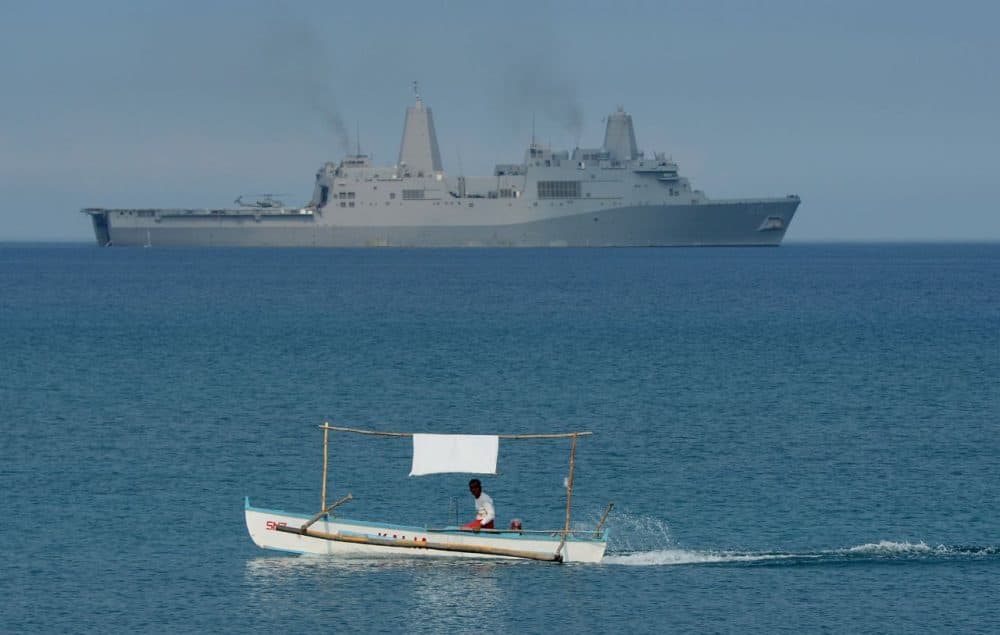Advertisement
Planned U.S. Patrols In South China Sea Escalate Tensions
Resume
China has been dredging sand and piling it on reefs to create artificial islands in the South China Sea, one of the world's busiest shipping lanes.
The United States is considering sending warships within 12 nautical miles of at least one of these islands, which would challenge China's sovereign claim to the waters and could escalate tensions between the two countries.
Robert Daly, director of the Kissinger Institute on China and the United States at the Wilson Center, talks with Here & Now's Jeremy Hobson about what this means for U.S.-China relations.
Guest
- Robert Daly, director of the Kissinger Institute on China and the United States at the Wilson Center.
This segment aired on October 16, 2015.